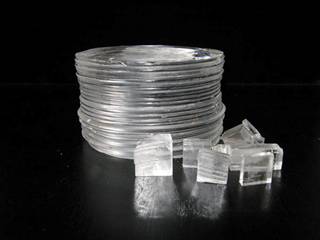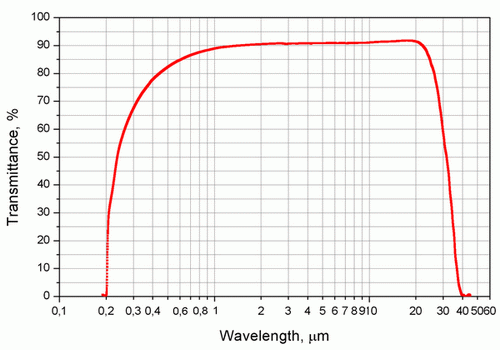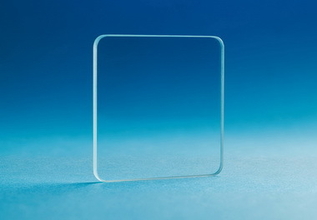Potassium Bromide (KBr)
| Download KBr (Potassium Bromide) Datasheet (PDF, 139 KB) |
 Potassium bromide (KBr) is one of the most popular materials used in spectroscopy due to the wide transmission range. It corresponds to salt crystals as well as KCl and NaCl. KBr is a monocrystal, soft and stable to thermal influence however should be avoided from a contact with water and spirit solutions, glycerin, and acids. Due to material hygroscopicity the polished parts require storage in desiccator or in sealed package with silica gel in a warm room.
Potassium bromide (KBr) is one of the most popular materials used in spectroscopy due to the wide transmission range. It corresponds to salt crystals as well as KCl and NaCl. KBr is a monocrystal, soft and stable to thermal influence however should be avoided from a contact with water and spirit solutions, glycerin, and acids. Due to material hygroscopicity the polished parts require storage in desiccator or in sealed package with silica gel in a warm room.
Application:
- IR / FTIR spectroscopy
Product types:
- Plane-parallel windows and wedges
- Beamsplitter substrates for FTIR spectroscopy
- Lenses
Specifications
Tab.1. Typical specification of KBr optical components
|
Transmission Spectrum

For the optics we use KBr material with absorption less than 0.5% in absorption bands (through reference 3mm thickness).
Tab.2. Refractive index
|
Tab.3. Optical properties
|
||||||||||||||||||||||||||||||||
Tab.4. Physical and mechanical properties
|
||||||||||||||||||||||||||||||||||||||||||||||||||||||||||
Tab.5. Chemical stability / Solubility
|
Please pay your attention that this article is for your information only. We do not supply KBr in ingots as well as semi-finished products. Our standard products are polished parts.
For further information on our KBr optical components please see the following: Windows for IR-spectroscopy, FTIR beamsplitter substrates, Packaging or fill in our request form.
Optics is ready to be shipped!
Optics Stock
Shipment/ Payment/ Warranty ...






